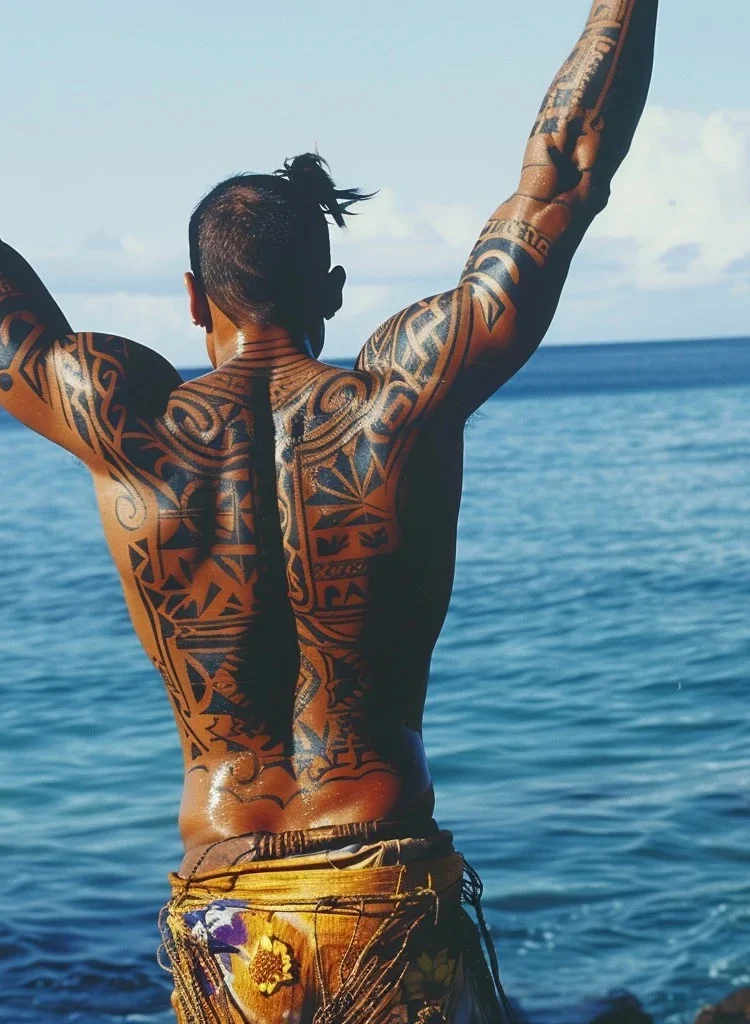
Swimming after a tattoo in hawaii
Explore the risks of swimming after a tattoo and provide tips for proper aftercare. This will help you keep your new ink vibrant and healthy.
What You Need to Know to Protect your Tattoo
With its crystal-clear waters, pristine beaches, and stunning landscapes, Hawaii is the perfect destination for many things: relaxing, sightseeing, and, of course, getting a new tattoo. Tattoos are a huge part of Hawaiian culture, and for those seeking a piece of the island’s rich traditions, getting inked is a way to carry home a more unique memory. However, as with any tattoo, it’s important to take proper care of it after you leave the studio. One question that often arises here at Loyalty Tattoo Kailua, after getting a tattoo in Hawaii, is whether or not it’s safe to swim, especially given the allure of the ocean and the island’s natural beauty

The Healing Process: Why You Should Avoid Swimming After Getting a Tattoo
When you get a tattoo, your skin undergoes a healing process. The tattooed area is an open wound where the ink is deposited in the dermis layer of your skin. With any wound, you must allow the area to heal properly to avoid infection, irritation, or other complications.
For the first few weeks after getting a tattoo, your skin is vulnerable and requires special care. Swimming in the ocean, hot tubs, or other bodies of water can and will introduce bacteria and other pathogens to the area, increasing your risk of infection. Saltwater, while generally clean, can also be harsh on a new tattoo because it dries out the skin and can cause the tattoo to fade prematurely. Chlorine in pools is another issue, as it can irritate the tattooed skin and disrupt the healing process.

Risks of Swimming After a Tattoo
1. Infection: One of the biggest risks of swimming in the ocean or a pool with a fresh tattoo is the potential for infection. The ocean, while very inviting, is home to a variety of bacteria and microorganisms that can easily enter your skin if it’s not properly protected. Pools contain chlorine, which can dry out your skin and increase the chances of infection. Even if the water appears clean, bacteria from swimmers and the environment can still pose a risk.
2. Fading and Distortion: The sun and saltwater can lead to the fading of tattoo ink. Tattoos are often vibrant and bold right after being tattooed, but exposure to the sun and saltwater can cause the colors to dull and the lines to blur. Additionally, the harsh effects of chlorine or saltwater can cause your skin to dry out and the tattoo to peel, potentially distorting the design.
3. Scabbing and Peeling: As your tattoo heals, you’ll likely experience some peeling and scabbing. The process can be uncomfortable, but it’s essential to resist the urge to pick at the scabs. Submerging your tattoo in water could cause premature peeling or scabbing, and if the scabs fall off too early, it can affect the overall appearance of the tattoo.
4. Delayed Healing: Swimming in any type of water can extend the healing time of your tattoo. The bacteria, chlorine, and salt in the water can slow down the natural healing process. Infections or skin irritation can also delay the scabbing and peeling process, leaving you with an incomplete or uneven healing experience.
How Long Should You Wait Before Swimming?
While it might be tempting to jump into the ocean or a pool while vacationing in Hawaii, it’s essential to give your tattoo the time it needs to heal. The general recommendation is to wait at least 2-3 weeks before swimming in any body of water. During this time, your tattoo will undergo the crucial stages of healing, including scabbing, peeling, and the formation of a protective layer of skin over the ink.
However, it’s important to keep in mind that healing times can vary from person to person. Some tattoos may take longer to heal, especially larger or more intricate designs, or tattoos on areas of the body that experience more movement or friction (such as the elbows, knees, or hands). Always follow your tattoo artist’s specific aftercare instructions, and consult them if you have any concerns about swimming during the healing period.
There are products on the market that can make swimming with a fresh tattoo safer. Loyalty Tattoo Kailua, can not recommend swimming with a new tattoo, but if you have to get in the water, we recommend using Saniderm to protect your ink. Saniderm is a waterproof bandage that will help keep out bacteria and prevent infection.
This extra layer of protection is essential if you get into any body of water after a new tattoo.
Read our full Tattoo Aftercare Guide
Final Thoughts
Getting a tattoo in Hawaii is a wonderful experience that allows you to carry a piece of the island’s culture and beauty with you. However, it’s crucial to take proper care of your tattoo to ensure it heals well and stays vibrant for years to come. Swimming right after getting a tattoo is not advisable, but by following the aftercare tips and waiting for your tattoo to heal, you’ll be able to enjoy your vacation and the ocean safely.
Be patient, follow your tattoo artist’s advice, and soon enough, you’ll be able to dive into the Hawaiian waters with confidence, knowing your tattoo is fully healed and looking its best!